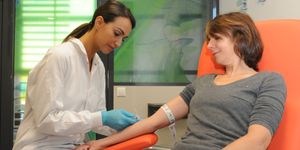Human Contact Increases Antibiotic Resistance Carried by Galapagos Tortoises
Recent research has found that even remote and protected habitats like the Galapagos Islands are not safe from the world's plastic pollution. Now scientists have determined that giant Galapagos tortoises that come into contact with humans, whether through tourism or agricultural activities, are carrying more antibiotic resistance than Galapagos tortoises that are more isolated from that activity. This work has been reported in Environmental Pollution.
"Human activities are facilitating the dispersal of resistance into the environment, which has already been observed in other parts of the world, but which has never been demonstrated on the Galapagos Islands," said lead study author and Universidad Complutense de Madrid (UCM) graduate student Ainoa Nieto.
The World Health Organization has issued a series of ominous warnings about the growing threat of antibiotic resistant microbes, which already kill an estimated 700,000 people every year worldwide. By 2050, these difficult or impossible to treat infections may kill more people than cancer. This research has shown how far antibiotic resistance genes have penetrated into the environment. Microbes have many ways of sharing genetic material; sometimes the genes that confer antibiotic resistance are contained in mobile genetic elements that can be freely passed from one bacterium to another.
In this study, researchers collected samples from 270 tortoises on the Galapagos islands of Santa Cruz and Isabela between 2018 and 2019. Santa Cruz has the biggest human population on the islands, while the volcanic location where samples were collected on Isabela is remote. When the samples were analyzed, the researchers did not have to grow the bacteria first in the laboratory, they used a technique that identifies antibiotic resistance genes directly from the sample. This quantitative PCR work revealed antibiotic resistance genes as well as how many bacteria in the sample carried those genes. There were 21 different antibiotic resistance genes identified, which can confer resistance to eight common groups of antibiotics that are now commonly used.
"We don't know the real implications that this discovery could have for the health of giant tortoises, but resistance is considered environmental pollution, and the fact that species as iconic as Galapagos tortoises are entering into contact with these resistant bacteria implies that the ecosystem in which they live is being contaminated," explained Casilda Rodríguez, a researcher at the Department of Pharmacology and Toxicology at UCM.
In the Galapagos, as in many other parts of the world, antibiotics can be easily obtained without a prescription. The unrestricted use (and indiscriminate prescribing where it is restricted) of antibiotics are thought to have contributed to the growing problem of antibiotic resistance.
Sources: AAAS/Eurekalert! via Universidad Complutense de Madrid, Environmental Pollution









